
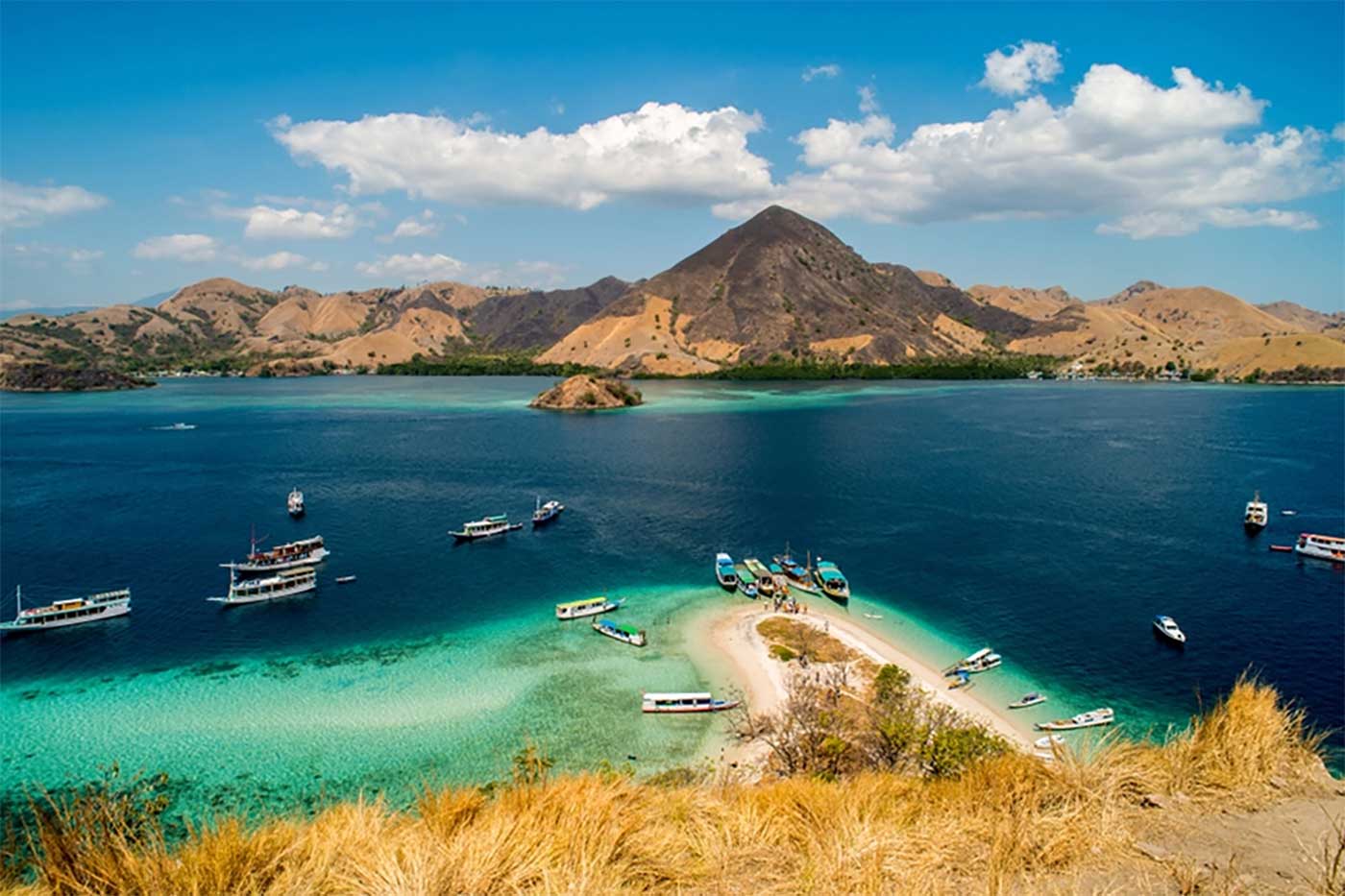


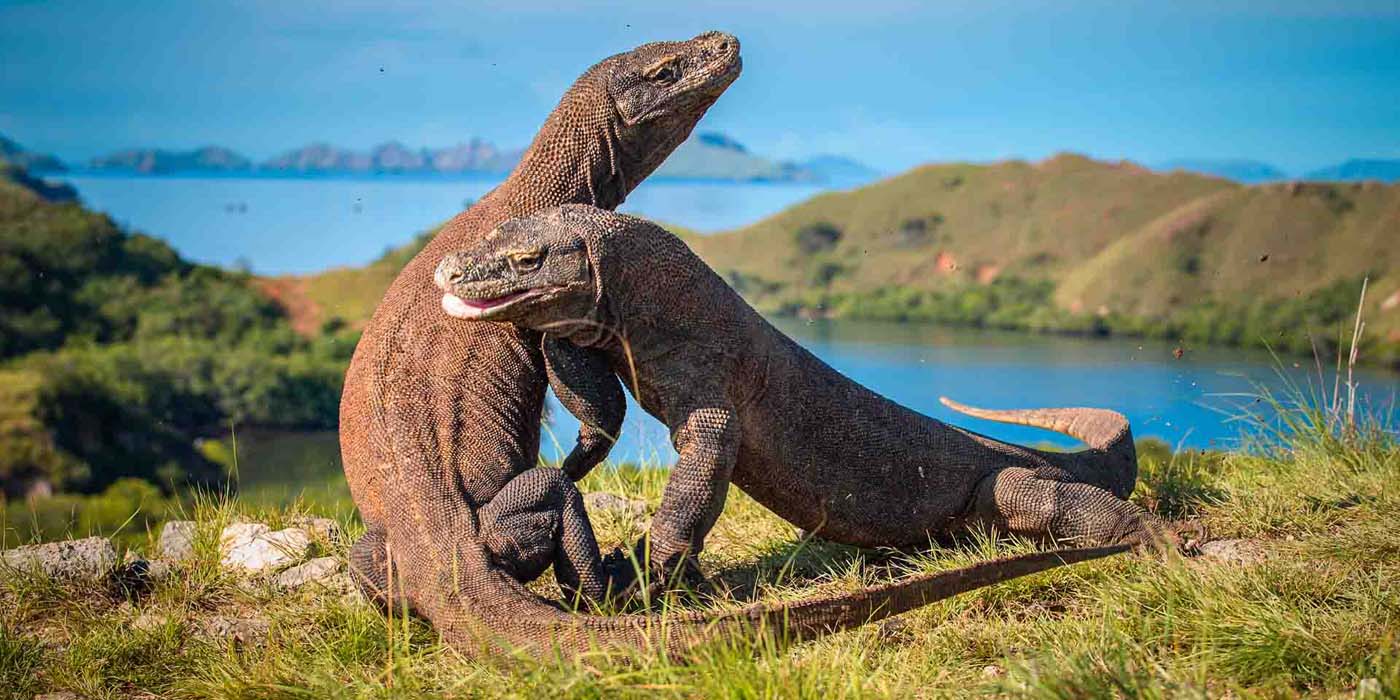
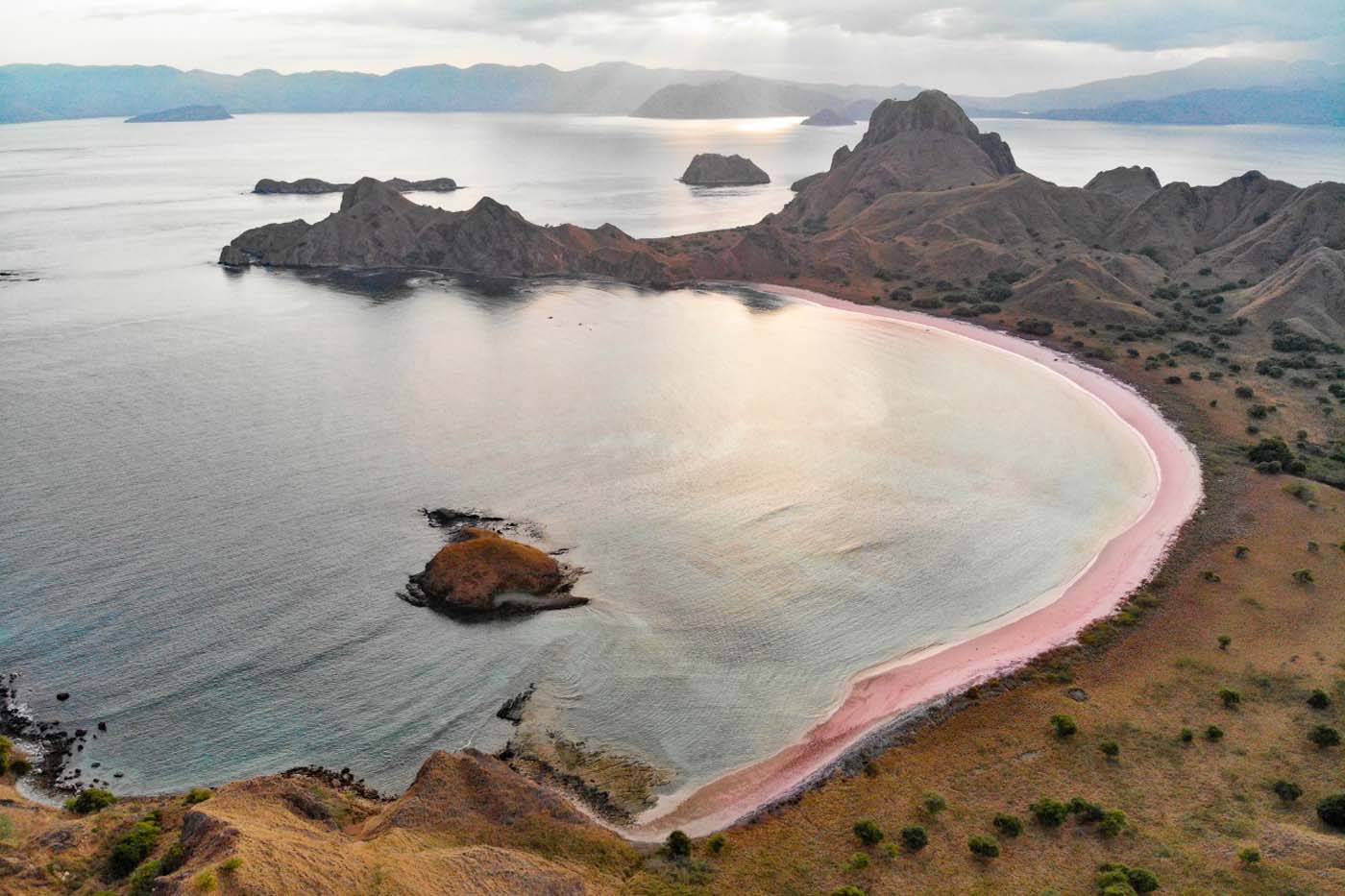
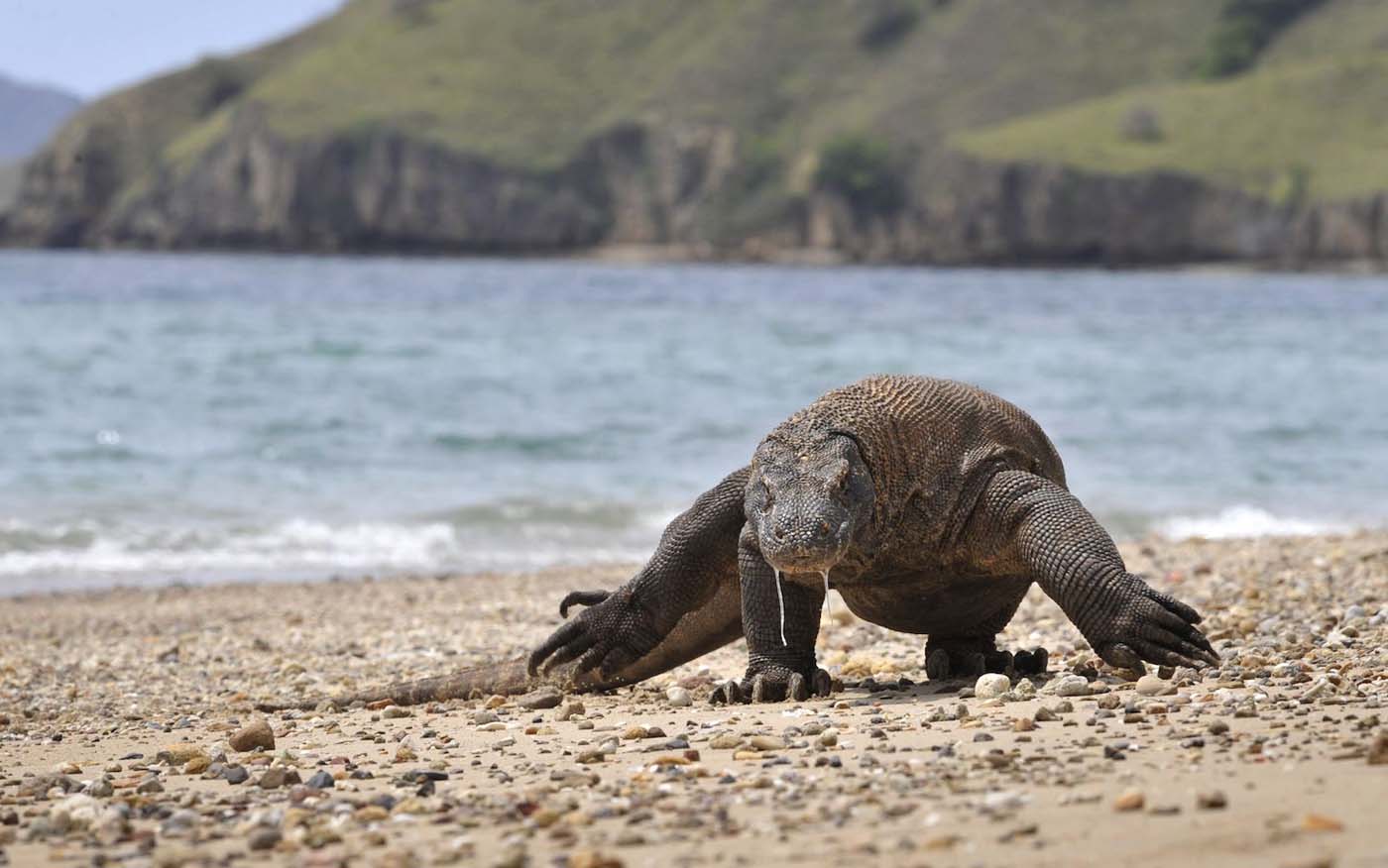
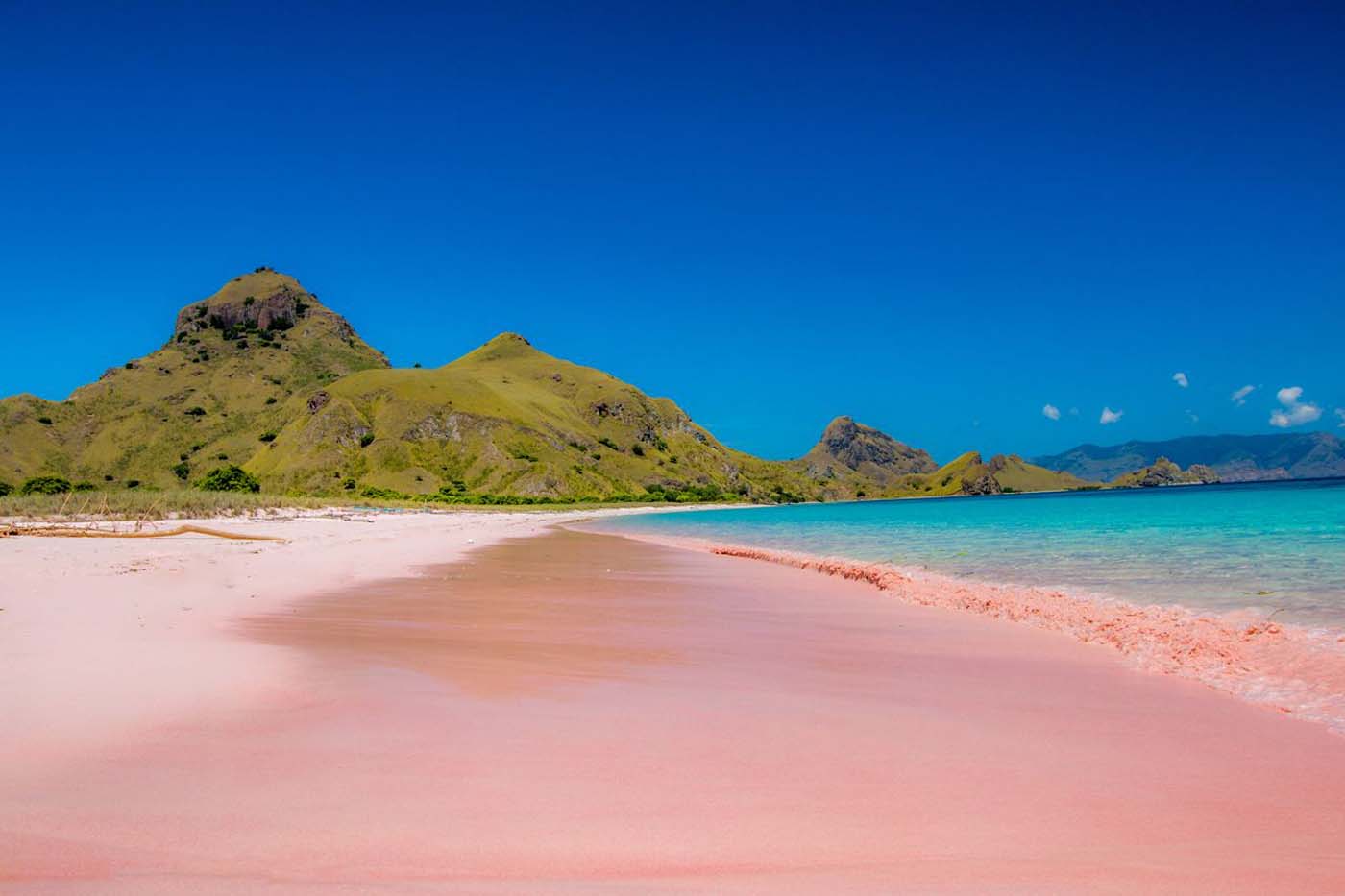



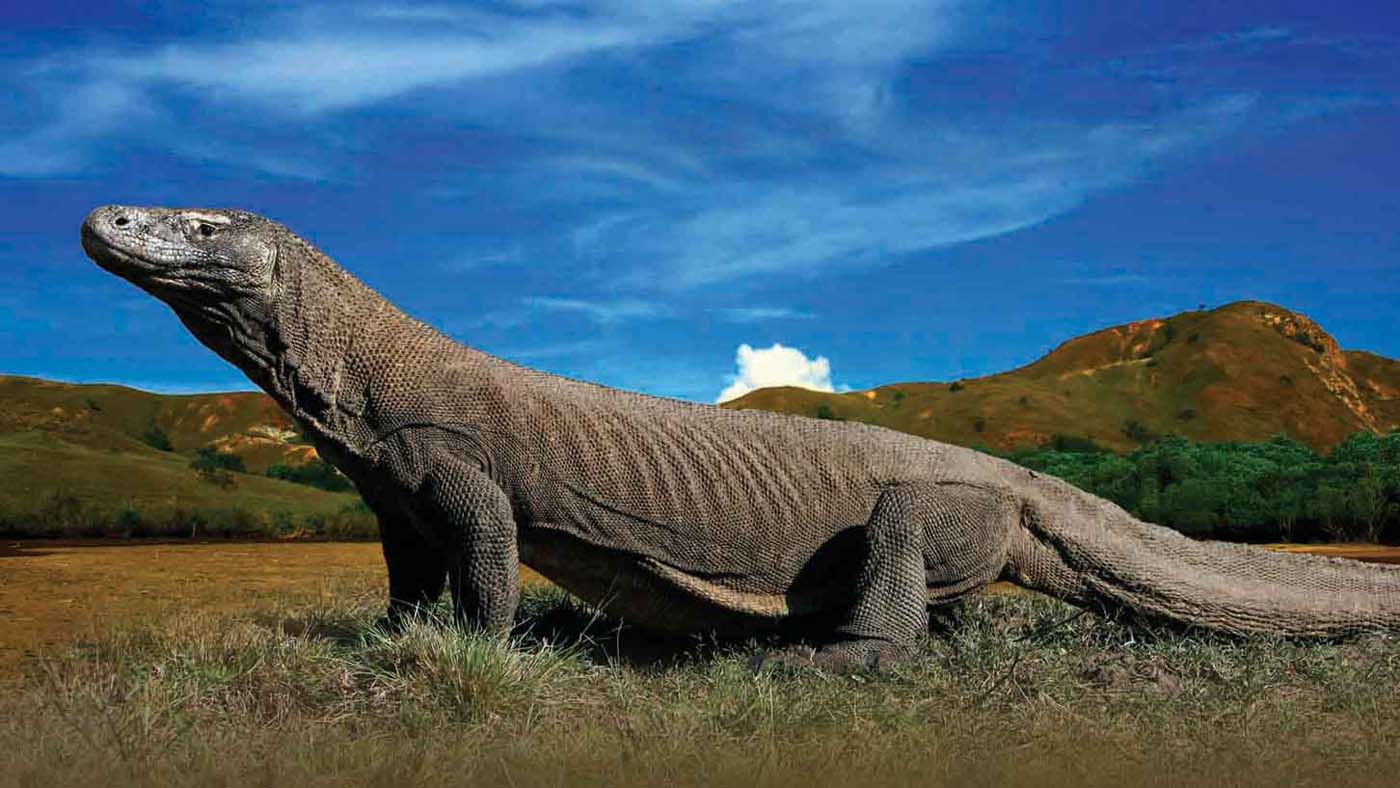

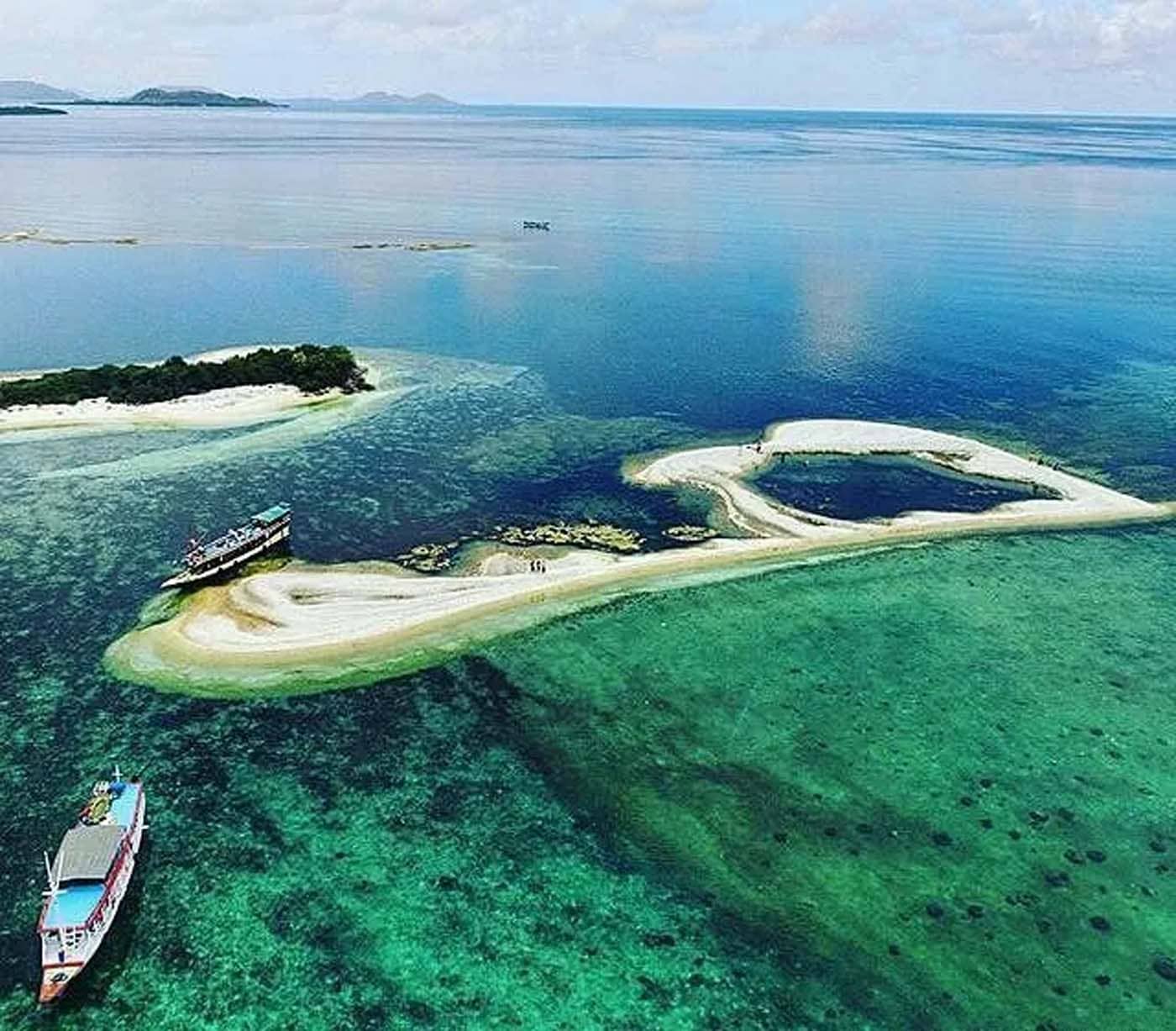
Komodo National Park, [22], is in the Nusa Tenggara region of Indonesia.
Komodo National Park lies in the Wallacea Region of Indonesia, identified by WWF and Conservation International as a global conservation priority area, and is located in the center of the Indonesian archipelago, between the islands of Sumbawa and Flores.
Komodo National Park includes three major islands: Komodo, Rinca and Padar, as well as numerous smaller islands creating a total surface area (marine and land) of more than 1,800 km2. As well as being home to the Komodo Dragon, also known as the Komodo Monitor, or Ora (to Indonesians), the park provides refuge for many other notable terrestrial species. Moreover, the Park includes one of the richest marine environments.
The number of terrestrial animal species found in the Park is not high, but the area is important from a conservation perspective as some species are endemic. Many of the mammals are Asiatic in origin. Several of the reptiles and birds are Australian in origin. These include the orange-footed scrubfowl, the lesser sulpher-crested cockatoo and the nosy friarbird.
The most famous of Komodo National Park’s animals is the Komodo Dragon (Varanus komodoensis). It is the world’s largest living lizard and can reach 3 metres or more in length and weigh over 70kg.
Other animals include the Timor deer, the main prey of the Komodo dragon, wild horses (kuda liar), water buffalo, wild boar (babi liar), long-tailed macaques, palm civets, the endemic Rinca rat (tikus besar Rinca), and fruit bats.
Also beware of the snakes inhabiting the island, including the cobra and Russel’s pit viper, both of which are extremely dangerous.
As far as the marine fauna is concerned, Komodo National Park includes one of the world’s richest marine environments. It consists of over 260 species of reef building coral, 70 different species of sponges, crustaceans, cartilaginous (incl. manta ray and sharks) and over a 1,000 different species of bony fishes (over 1,000 species), as well as marine reptiles (incl. sea turtles), and marine mammals (dolphins, whales, and dugongs).
Tropical all year round, and both extremely hot and dry (> 40 degrees Celsius) during August and September.
On land: On foot, only, as there are neither roads nor motor transport.
On sea: By chartered boat, only, as there are no regular connections.
You may wish to wear long pants, sunglasses and a hat as you walk in the interior.
The main reasons to travel to Komodo National Park are the Komodo Dragons, the superb beaches and the unspoilt corals.
Keep in mind that there are also wild pigs, monkeys and horses on Pulau Rinca, one of the two largest islands in the park.
If you return by sea at night, you can also see legions of flying foxes (fruit bats whose wing span may exceed 4 feet) flying in the twilight sky.
At night on the Flores Sea, you also have a magnificent view of the stars.
The Komodo Dragon has a history of attacking humans. Beware of getting too close, and if you are visiting via the park’s office (which you should), ask for a guide and stick close to him. Do not wander off or do anything without his consent. Komodos may approach the guest rest area during daily feeding time, but in this time, find a building (which are usually elevated) and stay clear from the railings. Komodos can and will jump to obtain food if necessary. Park rangers are usually present at these events and will deflect any Komodos trying to get in (which they can do).
You may be given a large pole with a split on the end, forming a “Y” shape. This can be used as a walking pole or for moving things on your path – however, if wild animals threaten, it can be used as a last form of defence (despite being hardly useful against Komodos). Overall, try keeping a watchful eye and steer clear of any wildlife.
Komodos are extremely dangerous if close enough. They can run faster than humans (and accelerate very quickly), so best not approach if necessary. Jumping into water (as Komodos are often found near the beach too) doesn’t help either, as they can swim faster than humans, can dive, and can also swim against strong currents (in fact, sometimes Komodos are found on neighboring islands, suspected of swimming there).
Zoologists formerly believed that the main problem was the dragon’s diseased-filled bite from the rampant bacteria residing in their mouth. More recently theories have been put forward that the Komodo Dragon is actually venomous, and that the biggest problem when bitten is shock and massive blood loss due to the ferocity of the bite. Whichever, getting bitten is not a good thing.
The absence of crocodiles on Komodo Island (due in part to a lack of suitable habitat) leave the Komodo Dragons with no natural predators.
Younger Komodos may live in trees. While not as dangerous as their parents, they can still jump off suddenly and cause panic. Snakes, monitor lizards, and other animals are also present and may cause minor problems.
Saltwater Crocodiles are not present on Komodo Island but they may be present on the surrounding islands and in the ocean. Any area with estuaries and river mouths should permit extra caution as, although they are technically not present on Komodo, the islands ARE within the species natural range. It was once believed by Indonesian natives that monitor lizards (including the Komodo dragon) were capable of warning humans of a crocodile’s presence.

Subscribe now and be the first to know about our special deals, promotions and offers!
Type your keyword on the search box below.
This will close in 0 seconds
